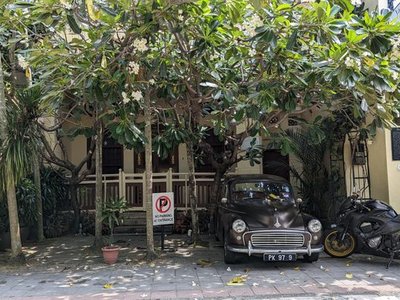Jawi House


Penang is well-known for its
vibrant Straits Chinese Peranakan culture, but if you know where to look, there’s another chapter to its history.
While the focus is often on the marriage between overseas Chinese traders marrying local Malay women, the truth is, the Chinese were not the only traders conducting business in
George Town
. Merchants from around the region were familiar with Penang, having already flowed through Penang on various trading missions.
Between the 10th and 18th centuries,
traders and migrants from India, Persia, and the Middle East
arrived in Penang. Their marriages with local Malay women gave rise to a new branch of the Peranakans, known as
Jawi Peranakan
, with Jawi denoting Southeast Asian Muslims, and Peranakan taking its meaning from the Malay word ‘anak’, or child. Over time, this group expanded to include those who had Arab-Malay ancestry. In Penang, they were also once known as Jawi Pekan.
The Jawi Peranakan cuisine, much like its Chinese cousins, draws on cultural exchanges between Malay cuisine and its
Indian, Arab, and Persian influences
. Jawi Peranakan dishes tend to feature ingredients from
India
and the Middle East, including ground almonds and cashews, saffron, and rosewater. The cuisine of the Jawi Peranakan was generally recognized to be more lavish, and was often served during feasts and special occasions.
To get a taste of this chapter of Peranakan history, visit
Jawi House
, located on Armenian Street in the heart of George Town’s downtown heritage district. The house was recently renovated in 2012 according to UNESCO World Heritage Guidelines, but it has existed for six generations. It was established by the
Karim family of Punjabi-Jawi Peranakan history
, and today functions as not just a restaurant showcasing a modern take on Jawi Peranakan cuisine, but also as a small gallery charting the family’s history as well as classic handcrafted art.
Helmed by Chef Nurilkarim Razha, a descendant of the Karim family, the restaurant offers up iconic Jawi Peranakan fare. Popular dishes include lamb
bamieh
, a fragrant, aromatic Persian-inspired okra and tomato-based lamb stew;
serabai
, a Malay
kuih
which resembles a tangy, spongier pancake made from fermented rice batter and served with caramel
kaya
(coconut jam); and
nasi lemuni
, an herbaceous rich rice dish cooked with butterfly pea flowers and the herb
Vitex trifolia
.